THE ISLANDS OF GREAT BRITAIN, IRELAND, THE HEBRIDES,
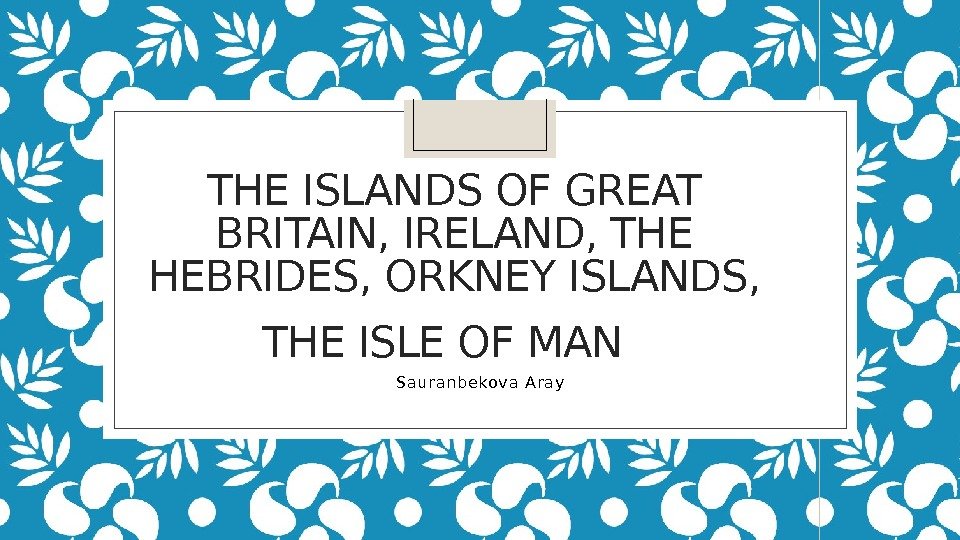
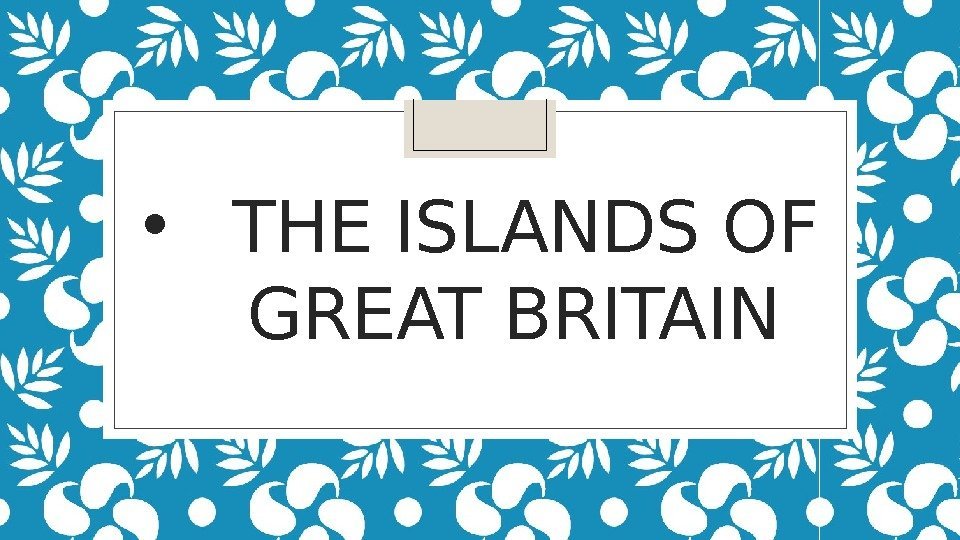
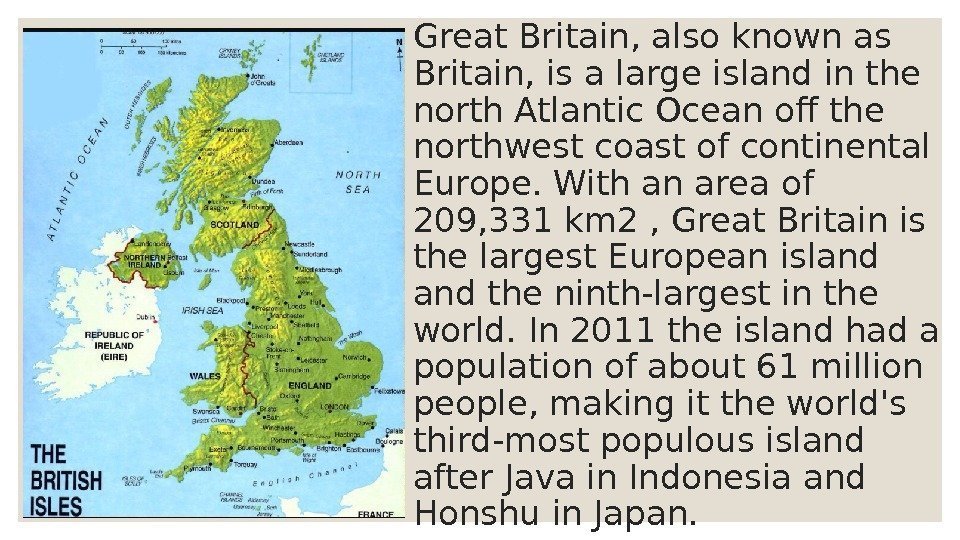
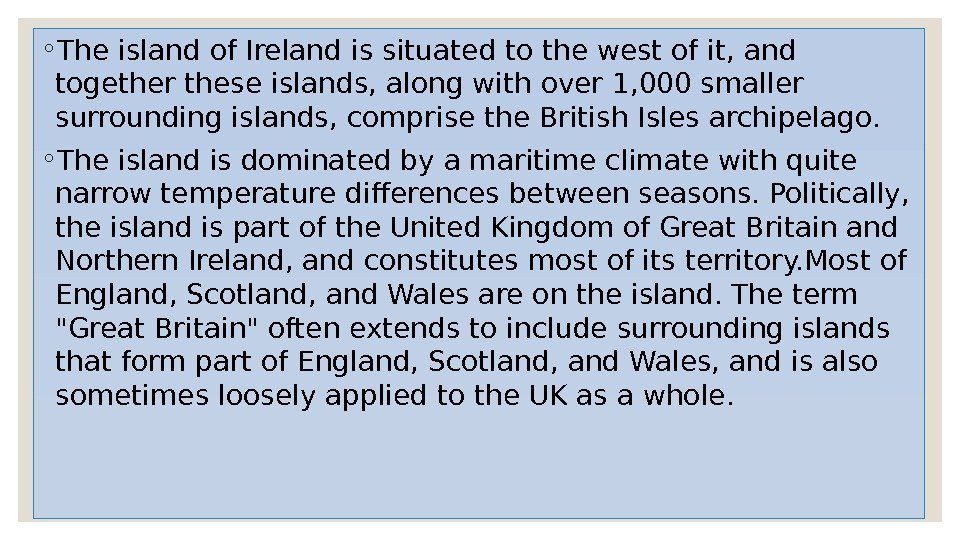
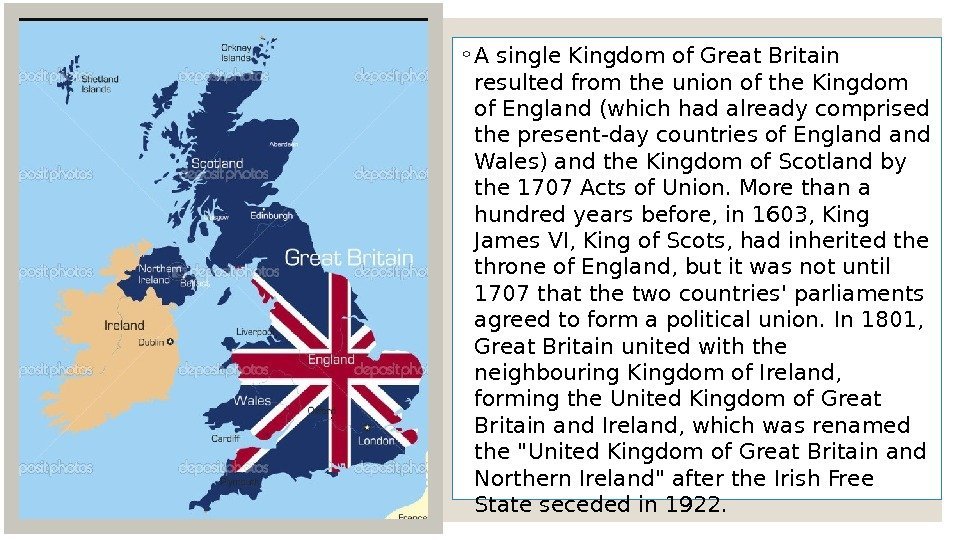
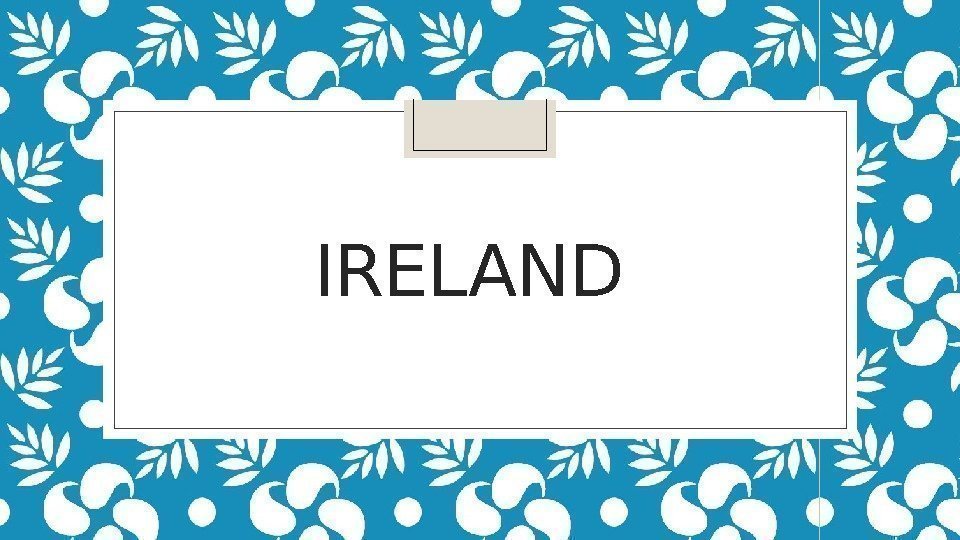
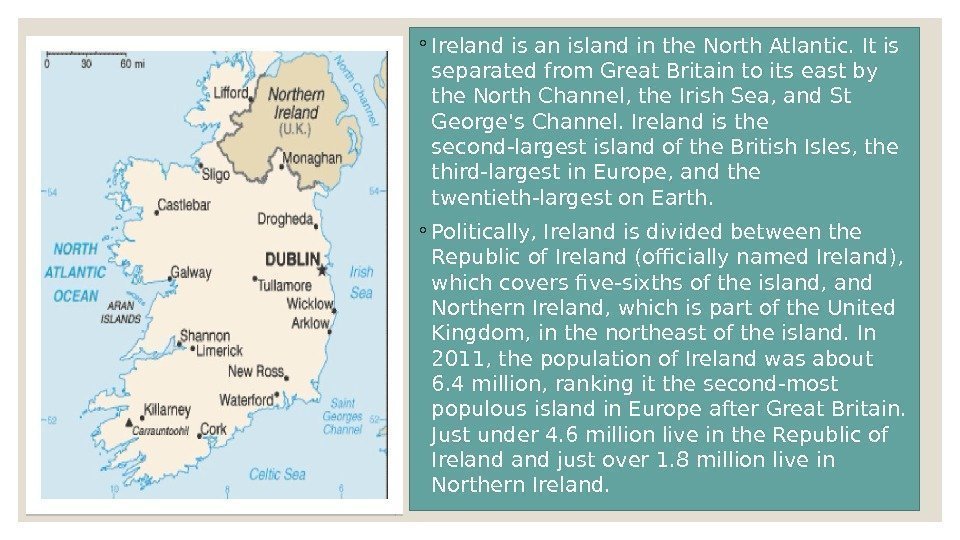
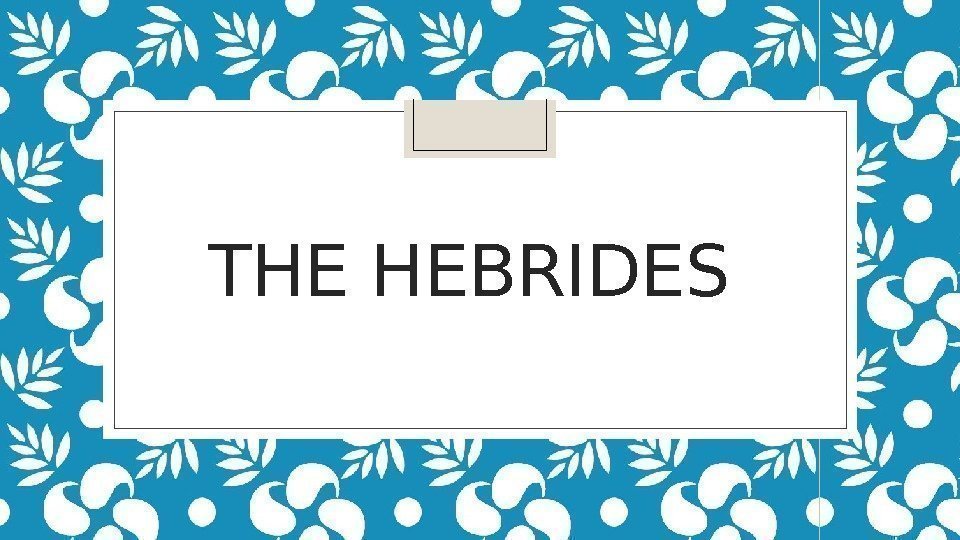
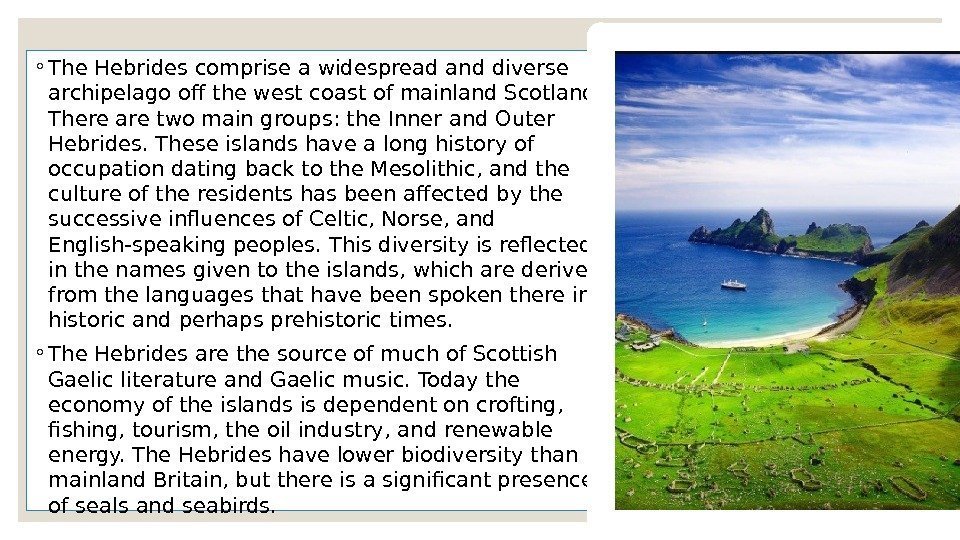
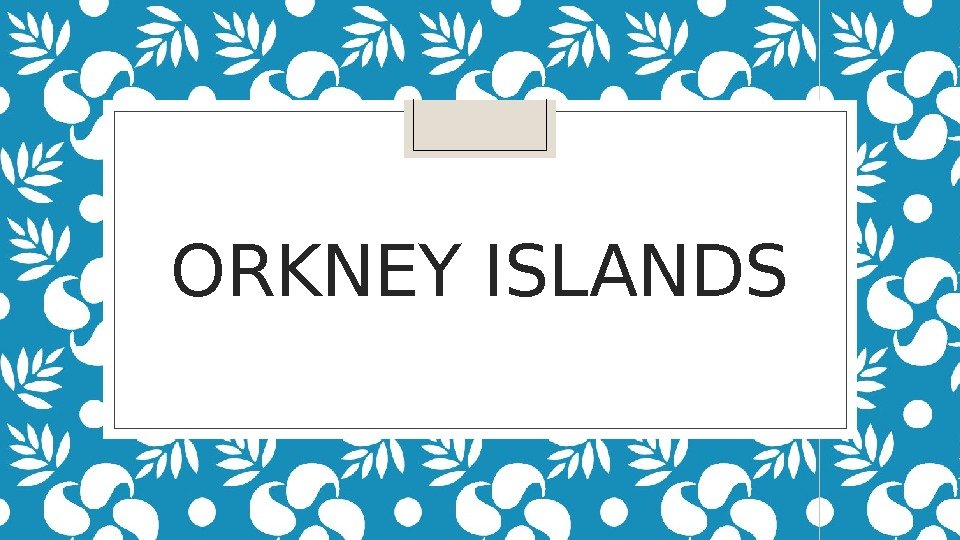
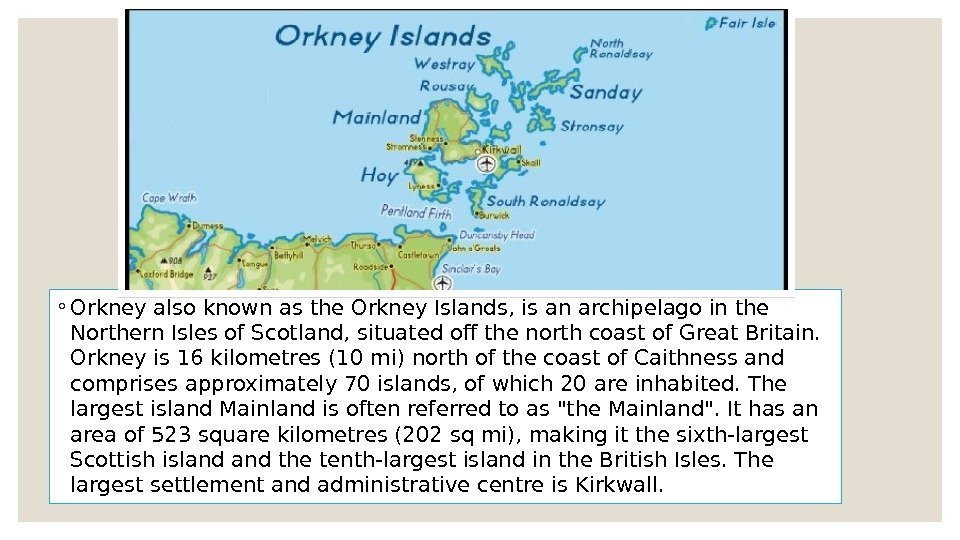
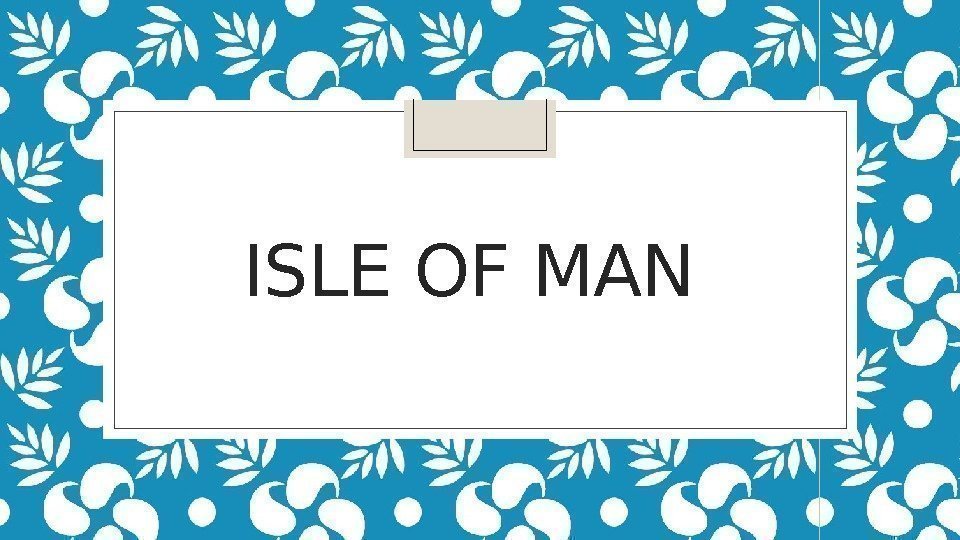
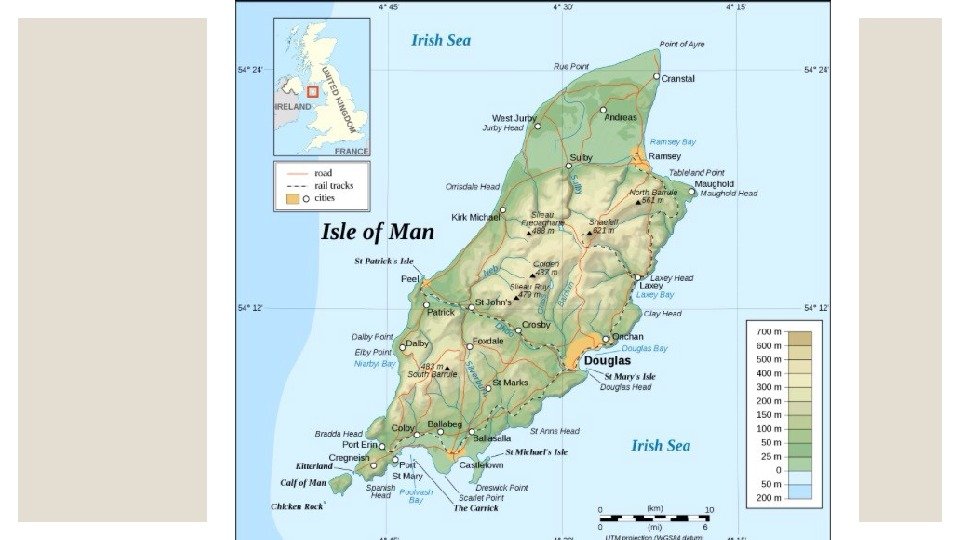
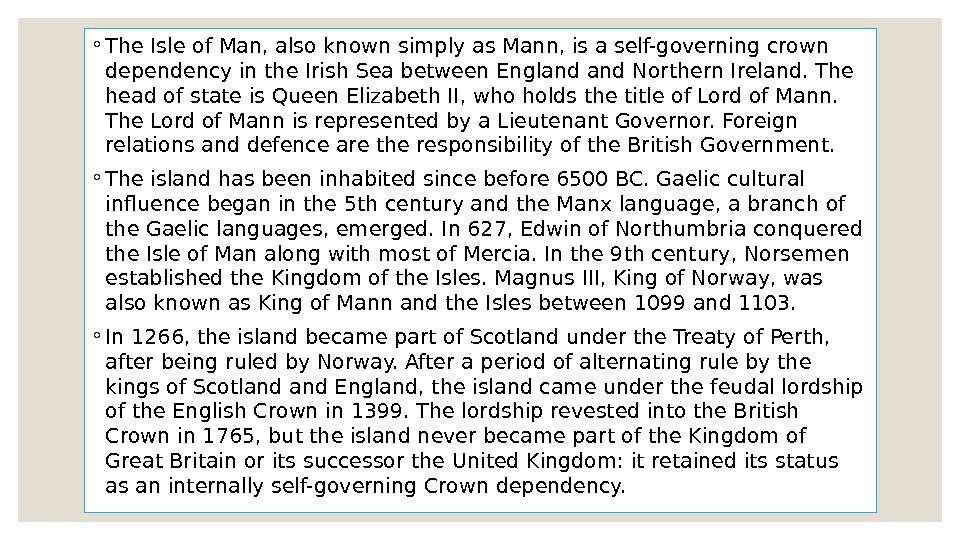
gb.pptx
- Размер: 3.1 Мб
- Автор:
- Количество слайдов: 14
Описание презентации THE ISLANDS OF GREAT BRITAIN, IRELAND, THE HEBRIDES, по слайдам
 THE ISLANDS OF GREAT BRITAIN, IRELAND, THE HEBRIDES, ORKNEY ISLANDS, THE ISLE OF MAN Saur anbeko va Ar ay
THE ISLANDS OF GREAT BRITAIN, IRELAND, THE HEBRIDES, ORKNEY ISLANDS, THE ISLE OF MAN Saur anbeko va Ar ay
 • THE ISLANDS OF GREAT BRITAIN
• THE ISLANDS OF GREAT BRITAIN
 Great Britain, also known as Britain, is a large island in the north Atlantic Ocean off the northwest coast of continental Europe. With an area of 209, 331 km 2 , Great Britain is the largest European island the ninth-largest in the world. In 2011 the island had a population of about 61 million people, making it the world’s third-most populous island after Java in Indonesia and Honshu in Japan.
Great Britain, also known as Britain, is a large island in the north Atlantic Ocean off the northwest coast of continental Europe. With an area of 209, 331 km 2 , Great Britain is the largest European island the ninth-largest in the world. In 2011 the island had a population of about 61 million people, making it the world’s third-most populous island after Java in Indonesia and Honshu in Japan.
 ◦ The island of Ireland is situated to the west of it, and together these islands, along with over 1, 000 smaller surrounding islands, comprise the British Isles archipelago. ◦ The island is dominated by a maritime climate with quite narrow temperature differences between seasons. Politically, the island is part of the United Kingdom of Great Britain and Northern Ireland, and constitutes most of its territory. Most of England, Scotland, and Wales are on the island. The term «Great Britain» often extends to include surrounding islands that form part of England, Scotland, and Wales, and is also sometimes loosely applied to the UK as a whole.
◦ The island of Ireland is situated to the west of it, and together these islands, along with over 1, 000 smaller surrounding islands, comprise the British Isles archipelago. ◦ The island is dominated by a maritime climate with quite narrow temperature differences between seasons. Politically, the island is part of the United Kingdom of Great Britain and Northern Ireland, and constitutes most of its territory. Most of England, Scotland, and Wales are on the island. The term «Great Britain» often extends to include surrounding islands that form part of England, Scotland, and Wales, and is also sometimes loosely applied to the UK as a whole.
 ◦ A single Kingdom of Great Britain resulted from the union of the Kingdom of England (which had already comprised the present-day countries of England Wales) and the Kingdom of Scotland by the 1707 Acts of Union. More than a hundred years before, in 1603, King James VI, King of Scots, had inherited the throne of England, but it was not until 1707 that the two countries’ parliaments agreed to form a political union. In 1801, Great Britain united with the neighbouring Kingdom of Ireland, forming the United Kingdom of Great Britain and Ireland, which was renamed the «United Kingdom of Great Britain and Northern Ireland» after the Irish Free State seceded in 1922.
◦ A single Kingdom of Great Britain resulted from the union of the Kingdom of England (which had already comprised the present-day countries of England Wales) and the Kingdom of Scotland by the 1707 Acts of Union. More than a hundred years before, in 1603, King James VI, King of Scots, had inherited the throne of England, but it was not until 1707 that the two countries’ parliaments agreed to form a political union. In 1801, Great Britain united with the neighbouring Kingdom of Ireland, forming the United Kingdom of Great Britain and Ireland, which was renamed the «United Kingdom of Great Britain and Northern Ireland» after the Irish Free State seceded in 1922.
 IRELAN
IRELAN
 ◦ Ireland is an island in the North Atlantic. It is separated from Great Britain to its east by the North Channel, the Irish Sea, and St George’s Channel. Ireland is the second-largest island of the British Isles, the third-largest in Europe, and the twentieth-largest on Earth. ◦ Politically, Ireland is divided between the Republic of Ireland (officially named Ireland), which covers five-sixths of the island, and Northern Ireland, which is part of the United Kingdom, in the northeast of the island. In 2011, the population of Ireland was about 6. 4 million, ranking it the second-most populous island in Europe after Great Britain. Just under 4. 6 million live in the Republic of Ireland just over 1. 8 million live in Northern Ireland.
◦ Ireland is an island in the North Atlantic. It is separated from Great Britain to its east by the North Channel, the Irish Sea, and St George’s Channel. Ireland is the second-largest island of the British Isles, the third-largest in Europe, and the twentieth-largest on Earth. ◦ Politically, Ireland is divided between the Republic of Ireland (officially named Ireland), which covers five-sixths of the island, and Northern Ireland, which is part of the United Kingdom, in the northeast of the island. In 2011, the population of Ireland was about 6. 4 million, ranking it the second-most populous island in Europe after Great Britain. Just under 4. 6 million live in the Republic of Ireland just over 1. 8 million live in Northern Ireland.
 THE HEBRIDES
THE HEBRIDES
 ◦ The Hebrides comprise a widespread and diverse archipelago off the west coast of mainland Scotland. There are two main groups: the Inner and Outer Hebrides. These islands have a long history of occupation dating back to the Mesolithic, and the culture of the residents has been affected by the successive influences of Celtic, Norse, and English-speaking peoples. This diversity is reflected in the names given to the islands, which are derived from the languages that have been spoken there in historic and perhaps prehistoric times. ◦ The Hebrides are the source of much of Scottish Gaelic literature and Gaelic music. Today the economy of the islands is dependent on crofting, fishing, tourism, the oil industry, and renewable energy. The Hebrides have lower biodiversity than mainland Britain, but there is a significant presence of seals and seabirds.
◦ The Hebrides comprise a widespread and diverse archipelago off the west coast of mainland Scotland. There are two main groups: the Inner and Outer Hebrides. These islands have a long history of occupation dating back to the Mesolithic, and the culture of the residents has been affected by the successive influences of Celtic, Norse, and English-speaking peoples. This diversity is reflected in the names given to the islands, which are derived from the languages that have been spoken there in historic and perhaps prehistoric times. ◦ The Hebrides are the source of much of Scottish Gaelic literature and Gaelic music. Today the economy of the islands is dependent on crofting, fishing, tourism, the oil industry, and renewable energy. The Hebrides have lower biodiversity than mainland Britain, but there is a significant presence of seals and seabirds.
 ORKNEY ISLANDS
ORKNEY ISLANDS
 ◦ Orkney also known as the Orkney Islands, is an archipelago in the Northern Isles of Scotland, situated off the north coast of Great Britain. Orkney is 16 kilometres (10 mi) north of the coast of Caithness and comprises approximately 70 islands, of which 20 are inhabited. The largest island Mainland is often referred to as «the Mainland». It has an area of 523 square kilometres (202 sq mi), making it the sixth-largest Scottish island the tenth-largest island in the British Isles. The largest settlement and administrative centre is Kirkwall.
◦ Orkney also known as the Orkney Islands, is an archipelago in the Northern Isles of Scotland, situated off the north coast of Great Britain. Orkney is 16 kilometres (10 mi) north of the coast of Caithness and comprises approximately 70 islands, of which 20 are inhabited. The largest island Mainland is often referred to as «the Mainland». It has an area of 523 square kilometres (202 sq mi), making it the sixth-largest Scottish island the tenth-largest island in the British Isles. The largest settlement and administrative centre is Kirkwall.
 ISLE OF MAN
ISLE OF MAN

 ◦ The Isle of Man, also known simply as Mann, is a self-governing crown dependency in the Irish Sea between England Northern Ireland. The head of state is Queen Elizabeth II, who holds the title of Lord of Mann. The Lord of Mann is represented by a Lieutenant Governor. Foreign relations and defence are the responsibility of the British Government. ◦ The island has been inhabited since before 6500 BC. Gaelic cultural influence began in the 5 th century and the Manx language, a branch of the Gaelic languages, emerged. In 627, Edwin of Northumbria conquered the Isle of Man along with most of Mercia. In the 9 th century, Norsemen established the Kingdom of the Isles. Magnus III, King of Norway, was also known as King of Mann and the Isles between 1099 and 1103. ◦ In 1266, the island became part of Scotland under the Treaty of Perth, after being ruled by Norway. After a period of alternating rule by the kings of Scotland England, the island came under the feudal lordship of the English Crown in 1399. The lordship revested into the British Crown in 1765, but the island never became part of the Kingdom of Great Britain or its successor the United Kingdom: it retained its status as an internally self-governing Crown dependency.
◦ The Isle of Man, also known simply as Mann, is a self-governing crown dependency in the Irish Sea between England Northern Ireland. The head of state is Queen Elizabeth II, who holds the title of Lord of Mann. The Lord of Mann is represented by a Lieutenant Governor. Foreign relations and defence are the responsibility of the British Government. ◦ The island has been inhabited since before 6500 BC. Gaelic cultural influence began in the 5 th century and the Manx language, a branch of the Gaelic languages, emerged. In 627, Edwin of Northumbria conquered the Isle of Man along with most of Mercia. In the 9 th century, Norsemen established the Kingdom of the Isles. Magnus III, King of Norway, was also known as King of Mann and the Isles between 1099 and 1103. ◦ In 1266, the island became part of Scotland under the Treaty of Perth, after being ruled by Norway. After a period of alternating rule by the kings of Scotland England, the island came under the feudal lordship of the English Crown in 1399. The lordship revested into the British Crown in 1765, but the island never became part of the Kingdom of Great Britain or its successor the United Kingdom: it retained its status as an internally self-governing Crown dependency.
